Sheffield Test – The Passivity Fit Test
Sheffield Test Background
The Sheffield Test, also known as the Sheffield Fit Test or the One Screw Test, is a widely accepted method in dentistry for evaluating the passive fit of implant-supported frameworks. This standardized procedure is employed to assess whether the frameworks fit accurately on their corresponding master casts or in the patient’s mouth. The Sheffield Fit Test is applicable to all screw-retained, one-piece metal frameworks, regardless of composition, fabrication method, or implant system used. While versatile, its effectiveness, like all visual assessments, diminishes as the framework-to-implant-abutment interface becomes less visible for inspection.
The Sheffield Fit Test originated in the early 1990s at the University of Sheffield’s School of Clinical Dentistry (United Kingdom). Initially, it was designed to evaluate the fit of wax/acrylic patterns and cast frameworks on both dental models and in patients’ mouths. This test served to verify the accuracy of dental impressions and other clinical procedures.
Despite advancements in dental technology, the Sheffield test’s enduring relevance is evident in its continued use by researchers, who still refer to it by name in scientific literature. This longevity underscores its effectiveness and importance in the field of implant dentistry.
How to Conduct the Sheffield Fit Test
The original Sheffield fit test was designed to be in 2 parts:
- Part 1: Determine if a discrepancy in fit exists
- Part 2: Assess whether any discrepancy of fit is severe enough to warrant a framework re-make
Preparation – The fitting surfaces of the framework, abutment heads and the master cast must first be scrupulously steam cleaned.
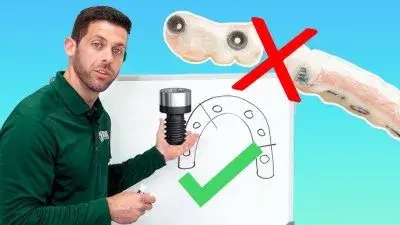
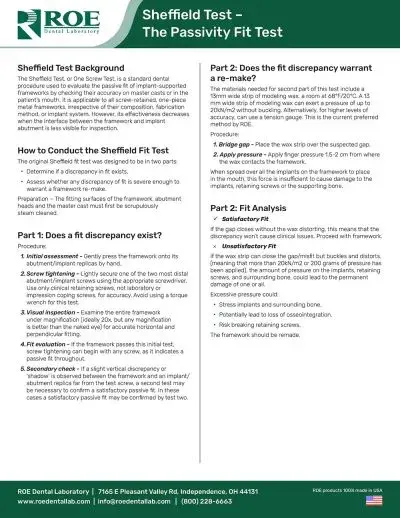
Part 1: Does a fit discrepancy exist?
Procedure:
| Steps | Description |
| 1. Initial assessment | Gently press the framework onto its abutment/implant replicas by hand. |
| 2. Screw tightening | Lightly secure one of the two most distal abutment/implant screws using the appropriate screwdriver. Use only clinical retaining screws, not laboratory or impression coping screws, for accuracy. Avoid using a torque wrench for this test. |
| 3. Visual inspection | Examine the entire framework under magnification (ideally 20x, but any magnification is better than the naked eye) for accurate horizontal and perpendicular fitting. |
| 4. Fit evaluation | If the framework passes this initial test, screw tightening can begin with any screw, as it indicates a passive fit throughout. |
| 5. Secondary check | If a slight vertical discrepancy or ‘shadow’ is observed between the framework and an implant/abutment replica far from the test screw, a second test may be necessary to confirm a satisfactory passive fit. In these cases a satisfactory passive fit may be confirmed by test 2. |
Part 2: Does the fit discrepancy warrant a re-make?
The materials needed for second part of this test include a 13mm wide strip of modeling wax, a room at 68°F/20°C. Alternatively, for higher levels of accuracy, can use a tension gauge. This is the current preferred method by ROE.
Procedure:
- Place the wax strip over the suspected gap.
- Apply finger pressure 1.5-2 cm from where the wax contacts the framework.
- This represents a 20KN/m² pressure load on the implant.
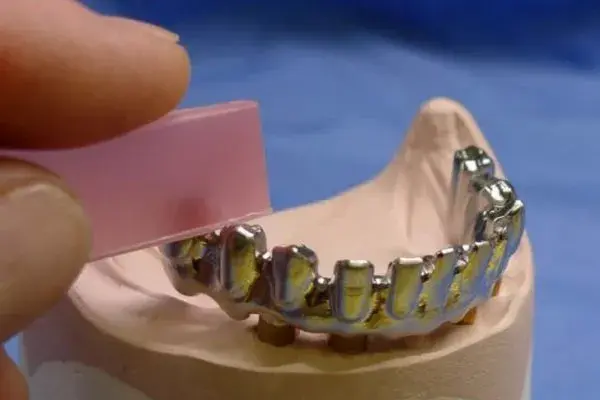
A 13 mm wide strip of modelling wax can exert a pressure of up to 20kN/m2 without buckling. When spread over all the implants on tightening the framework to place in the mouth, this force is insufficient to cause damage to the implants, retaining screws or the supporting bone.
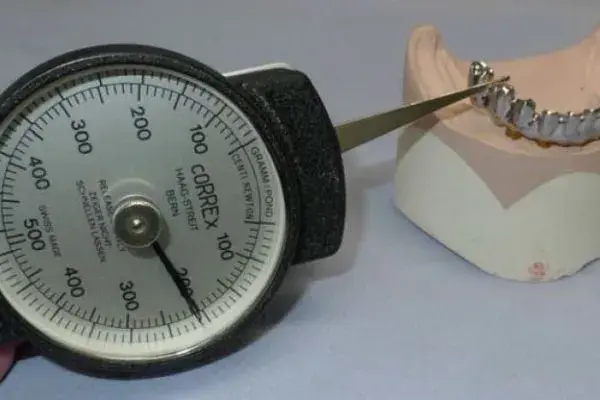
A tension gauge can also be used to carry out the Sheffield fit test. Here the correct maximum load of 200 grams (20kN/m2) is being exerted.
Part Two Fit Analysis
Satisfactory Fit
If the gap closes without the wax distorting means that the discrepancy won’t cause clinical issues. Proceed with framework.
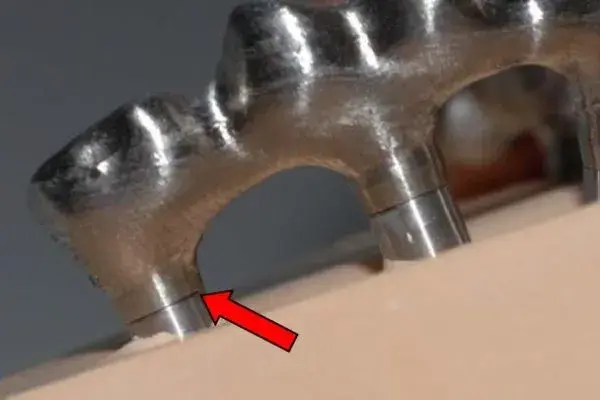
With one retaining screw in the opposite distal abutment a slight “gap” or misfit is observed between the framework and the abutments at the other end of the framework.
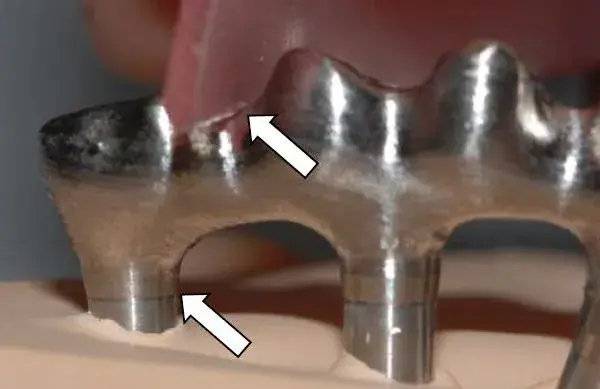
The misfit is able to be closed using the wax strip without any buckling or damage to the wax strip (less than 20kN/m2 or 200 grams of pressure). This framework is therefore clinically acceptable.
Unsatisfactory Fit
If the wax buckles or distorts while closing the gap indicates that the framework should be remade as the excessive pressure could:
- Stress implants and surrounding bone
- Potentially lead to loss of osseointegration
- Risk breaking retaining screws.
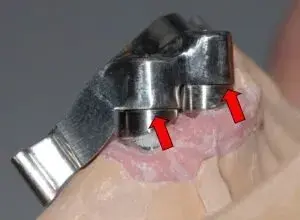
A noticeable gap/misfit between the framework and the abutment is seen with one retaining screw in the opposite distal abutment.
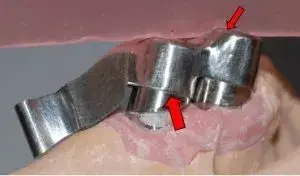
Although the wax strip used in the Sheffield Fit Test is able to close the gap/misfit the wax has buckled and distorted (more than 20kN/m2 or 200 grams of pressure). This amount of pressure on the implants, retaining screws and surrounding bone could lead to the permanent damage of one or all.
How can we help you today?
Can't find what you're looking for? No problem. Let us help.
ROE’s experts are dedicated to elevating your dental practice.
- Full-service national dental laboratory
- Comprehensive Certified Dental Laboratory (CDL) services
- Case planning support from 20+ Certified Dental Technicians
- Specialists in both fixed, removable, implant and full-arch dentistry
- Tailored support for all cases, from routine to complex
- National Association of Dental Laboratories (NADL) member
- Only FDA-approved materials used
- All products made in the USA
- Thousands of free online education materials